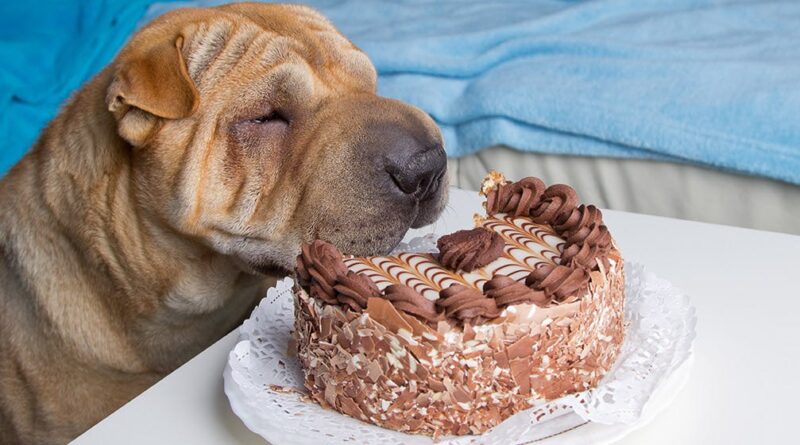So Why Is Chocolate Bad for My Dog?

Why cant dogs have chocolate?
Dogs are often curious creatures and will put just about anything in their mouths. This can be a problem when it comes to chocolate, which contains substances that are toxic to dogs. Chocolate contains theobromine, a natural substance found in the cocoa bean. Theobromine is not pretty much harmless for us humans. We would have to eat an extremely high dose of chocolate (no, that’s not a challenge!) and even then, we would only get a mild poisoning .
For dogs, however, it is easier to eat enough chocolate to get poisoned. The symptoms of theobromine poisoning in dogs can include vomiting, diarrhea, tremors, seizures, and even death. If you think your dog has ingested chocolate, it is important to seek veterinary care immediately. In most cases, early intervention can be the difference between life and death. Chocolate is toxic to dogs, and depending on the type and amount of chocolate consumed and the weight of your dog, it could cause a serious medical emergency. If you know your dog has eaten chocolate, it’s important to monitor him for signs of toxicity.
Best Halloween Costumes for Dogs
Best Halloween Costumes for Dogs It’s that time of year...
Read MoreChocolate is a common treat that is enjoyed by people all over the world. However, chocolate can be dangerous for dogs, and it is important to be aware of the risks. The type of chocolate determines the level of toxicity, with Baker's chocolate and cocoa being the most dangerous. Dark chocolate, milk chocolate and white chocolate are less toxic, but can still pose a risk to dogs. If you think your dog has eaten chocolate, it is important to monitor them for symptoms of toxicity, which include vomiting, diarrhea, hyperactivity, tremors and seizures. If your dog displays any of these symptoms, it is important to contact your veterinarian immediately. The Merck Veterinary Manual offers a chocolate toxicity meter that can help you determine if your dog has consumed a toxic amount of chocolate. By being aware of the risks, you can help keep your dog safe from the dangers of chocolate toxicity.
If you're thinking about training your dog to be a soccer goalie, you might want to look into Rocco. He's a dog who has an amazing ability to anticipate which way a ball is going to be kicked, just by watching the person's body language. He's so good at it that he often arrives at the destination of a thrown toy before it even gets there! Rocco is proof that dogs are much smarter than we give them credit for. So, if you're looking to train your dog to ignore people and other dogs, and just focus on the task at hand, Rocco is a great example to follow.
How Much Chocolate is poisonous to a dog?
Chocolate is one of the most popular human foods, but it can be dangerous for dogs. The amount of toxic theobromine varies with the type of chocolate, with darker and more bitter chocolate being more dangerous. Baking chocolate and gourmet dark chocolate are highly concentrated and contain 130-450 mg of theobromine per ounce, while common milk chocolate only contains about 44-58 mg/ounce. White chocolate rarely poses any threat of chocolate poisoning with only 0.25 mg of theobromine per ounce of chocolate. Even if the amount ingested is not a toxicity concern, dogs can still become ill from the fat and sugar in chocolate, which can cause pancreatitis in severe cases or in dogs that have more sensitive stomachs. To put this in perspective, a medium-sized dog weighing 50 pounds would only need to eat 1 ounce of baker's chocolate, or 9 ounces of milk chocolate, to potentially be poisoned. Chocolate is delicious, but it's important to keep it away from our furry friends.
Give Your Pup some Style with one of the 11 Best Dog Bandanas!
We Look At the Best Dog Bandans out there, and...
Read MoreChocolate poisoning in dogs is a serious condition that can lead to death if left untreated. Clinical signs depend on the amount and type of chocolate ingested, with the most common being vomiting, diarrhea, increased thirst, panting or restlessness, excessive urination, and racing heart rate. In severe cases, symptoms can include muscle tremors, seizures, and heart failure. Complications such as developing aspiration pneumonia from vomiting, can make the prognosis for chocolate poisoning worse. When in doubt, immediate treatment by your veterinarian is recommended if a poisonous amount of chocolate is ingested. With prompt treatment and supportive care, many dogs will recover from chocolate poisoning without any long-term effects. However, it is important to remember that chocolate is a potentially deadly toxin for dogs and should always be kept out of reach.
What should I do if my dog eats chocolate?
If your dog has ingested chocolate, the first thing you should do is contact your veterinarian or Pet Poison Helpline to see if a poisonous amount was ingested. If a toxic amount is ingested, you should have your dog examined by a veterinarian immediately. The sooner treatment a begins, the better your dog's prognosis. There are many factors that will determine how much chocolate is toxic to your dog, including the type of chocolate, the size of your dog, and how much was ingested. Treatment may include induced vomiting, IV fluids, and close monitoring. So if your dog has eaten chocolate, don't delay - call your vet right away!
What are the signs of chocolate poisoning?
Signs of chocolate poisoning usually appear within 6 to 12 hours after your dog has eaten it, may last up to 72 hours, and include the following:Vomiting Diarrhea Restlessness Increased urination Tremors Elevated or abnormal heart rate Seizures Collapse and death Note: Older dogs and dogs with heart conditions are more at risk of sudden death from chocolate poisoning.
English Bulldog
All About a English Bulldog English Bulldog What Makes Us...
Read MoreHow do I protect my dog from eating chocolate?
Dogs, like us, are drawn to sweets and will probably want to eat anything you are eating. Since dogs will likely eat chocolate if given the opportunity, it’s important to make sure your dog never comes into contact with chocolate.Here are some tips to ensure your dog will stay away from chocolate:Make sure all adults who come into contact with your dog know the dangers of chocolate for dogs. Keep chocolate out of reach – for example, store it in high cabinets. Use a baby-gate to keep your dog out of the kitchen and eating areas. Supervise children when they are around the dog, and teach them that feeding the dog chocolate is a no-no. Train your dog to obey the ‘leave it’ command. Whether you’re enjoying chocolate for a special occasion or on just a normal day – remember that chocolate is a great danger for dogs. Keep your puppy safe by keeping chocolate goodies out of reach, and protect your furry friend!







Pingback: Make You Pup Smell Great with the Best Dog Cologne - Doggies List
Pingback: No More Shortages! We Review the Best Wet Dog Food - Doggies List
Pingback: The Review Of The Best Training Collars For Stubborn Dogs
Pingback: Pembroke Welsh Corgi - Doggies List
Pingback: Top 5 Best at Home Dog Blow Dryers for Buyers - Doggies List